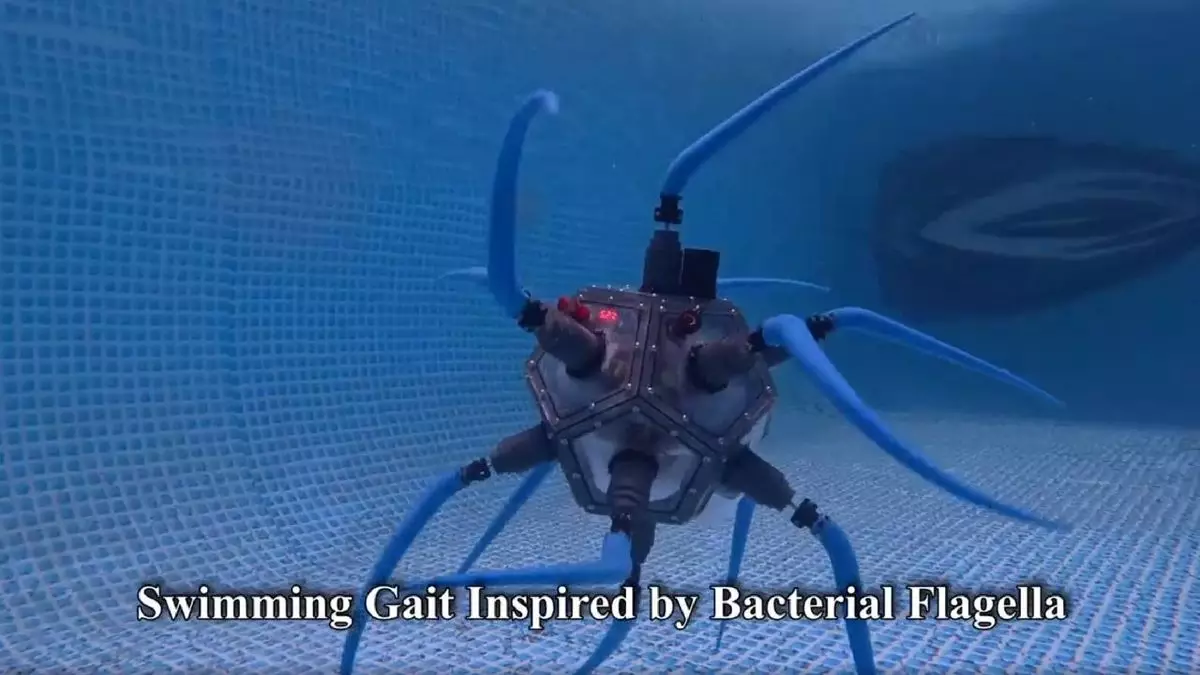As someone who has always admired the beauty and mystery of underwater environments, it’s hard not to be captivated by the advancements in robotics that allow us to explore these depths without risking human life. Enter ZodiAq, a pioneering underwater drone that is reshaping our approach to marine exploration. The notion that a machine can navigate the oceanic realm with the grace of its organic inspirations opens new doors to our understanding of aquatic ecosystems. The ZodiAq represents a convergence of biology and technology, creating opportunities that may redefine environmental studies, search and rescue operations, and even marine archaeology.
A Terrifying Yet Beautiful Design
Often described as a ‘soft robot,’ ZodiAq is not merely a metal box with propellers; it’s an ingeniously designed organism of technology. Its 12 soft, flagella-like limbs mimic the movement of natural marine creatures, making it capable of agility previously unseen in conventional underwater drones. The artistic vision behind its design embodies the notion that nature offers the most effective solutions for movement in water; the fluidity and minimal environmental disturbance elicited by ZodiAq is proof of that principle.
The underwater landscape is not just about what it contains, but how these robots interact with it. Unlike traditional drones that can often disrupt sea life with their mechanical movements, this drone operates under the principle of subtlety, allowing it to traverse delicate habitats without leaving a trail of chaos in its wake. The thoughtful design serves not merely aesthetic purposes but a significant ecological function.
Engineering the Depths
Diving deeper into the mechanics of ZodiAq, one sees the heart of innovation beat within its engineering prowess. At its core lies a sophisticated autonomous control system managed by a Raspberry Pi that seamlessly orchestrates dozens of critical functions. The ballast system allows the drone to maintain its center of gravity, ensuring it stays submerged and stable. Each of the 12 limbs operates on its individual motor, which can vary in speed and direction as needed.
What stands out particularly is the addition of onboard sensors that continually monitor environmental factors like temperature and humidity. This data not only helps to detect internal damage but also contributes to the drone’s situational awareness, ensuring it avoids collisions as it zips through the underwater terrain. It’s a forward-thinking design that blends the boundaries between robotics and environmental stewardship, highlighting the drone’s potential as a valuable tool for researchers and conservationists alike.
The Slow and Steady Wins the Race
While ZodiAq’s design may come across as delicate, its functional capabilities are robust and innovative. Notably, the drone does not attempt to swim with all 12 limbs simultaneously. This nuanced approach allows for more sophisticated movement patterns—essentially mimicking the efficiency of real marine creatures. In contrast to the chaotic and energy-hungry motions of traditional machines, ZodiAq illustrates that elegance in motion leads to greater effectiveness.
At its top speed, ZodiAq can manage a distance of two body lengths every 15 seconds. While this may not sound fast, it’s essential to recognize the capabilities this offers: the drone can cover extensive underwater areas over prolonged times while generating minimal impact on its surroundings. This affords researchers the ability to gather data and interact with marine life without the invasive methods of older technology—an essential shift toward ethical exploration.
Pushing Boundaries in Robotics
As we look toward an increasingly tech-driven future, ZodiAq serves as a reminder that the best innovations stand on the shoulders of nature itself. Instead of simply trying to outpace biological systems, engineers are now designing machines that work harmoniously with the environment. This alignment with nature is not just more efficient; it’s a vital roadmap for the next generation of robotics.
The creation of ZodiAq is part of a broader trend in which contemporary engineers and researchers are drawing inspiration from biological processes. By analyzing how living creatures navigate their ecosystems, researchers are developing robots that not only perform tasks but improve our overall understanding of the ecosystems they inhabit. This convergence offers the promise of safe exploration, and as we unlock the mysteries of the deep sea, ZodiAq stands at the forefront of a revolution.
In a world increasingly characterized by technology, we must maintain our connection to the natural world; ZodiAq strikes a harmonious balance between the two realms, reminding us of the responsibilities we bear as we explore the ocean’s depths.

